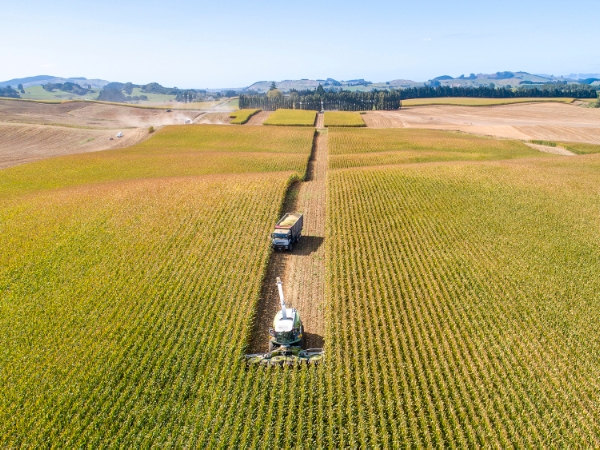Silage Harvest Preparation
Dry matter percentage at harvest
Dry matter percentage at harvest
Decisions around harvest timing are a balance between:
- Leaving the crop growing as long as possible to maximise DM yield/ha
- Harvesting the crop early enough before the whole plant becomes too dry/too mature to yield a top quality silage
Target dry matter (DM) percentage is a compromise between getting the best possible yield per hectare and having top quality silage for the animal.
Target harvest DM% between 32 and 38% DM (the same as 62 to 68% moisture)
For day one of harvest, start harvesting at the lower end of the target DM%. DM% can increase by 1% every 2 to 3 days depending on weather conditions.
Maize silage crop that's too wet (less than 30% DM?)
Maize silage crop that's too wet (less than 30% DM?)
Effluent losses from the stack
- Environmental concerns if nutrient-rich effluent reaches waterways.
- DM losses are likely in effluent – final DM yield of stack silage will be lower than silage at 32-38%DM.
- Sugar and protein losses – effluent run off contains good quality soluble nutrients, leaving poorer quality fibre behind = lower MJME silage.
High total acid production in the maize silage stack
- Wet maize produces too much acid, making the pH of the stack very low. This might cause feed refusal problems by animals.
- Acetic acid (vinegar) is produced in wet maize stacks. Cows dislike vinegar, increasing problems of feed refusal and losses at feedout.
Maize silage crop chopping too wet?
Contact your Corson Maize Seed Sales Agronomist for more advice. Ideas include lengthening theoretical length of chop (TLC) to 15-20 mm for wet maize silage and not processing the kernels.
Maize silage crop that's too dry (more than 40% DM)?
Maize silage crop that's too dry (more than 40% DM)?
Leaf material can shatter and be lost in the paddock during harvest
Stack is harder to chop/pack/roll
- Air can’t be squeezed from the stack, fermentation takes longer to drop stack pH to final level. More soluble nutrients are consumed. Final DM yield of stack is reduced.
- Stack can be unstable and dangerous to roll.
- Aerobic instability (heating and spoiling) of the face at feedout is likely.
Quality of the final product
- Dry maize silage contains less energy per kgDM.
- Stover is less digestible (lower MJME), higher NDF (neutral detergent fibre) and NDF is less digestible (lower NDFd) and contains fewer sugars.
- Rate and extent of rumen digestion of starch may be lower. Starch may be lost in the dung of cows, especially if cows are on lush pasture (rapid transit of maize through the gut) and if maize hasn’t been left in the stack for a number of months before feeding out.
Maize silage crop chopping too dry?
Contact your Corson Maize Seed Sales Agronomist for more advice. Ideas include a shorter theoretical length of chop (TLC) to improve stack compaction and closely monitoring the percentage of kernels cracked.

